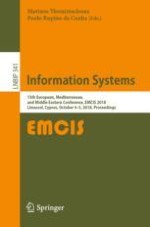2019 | OriginalPaper | Chapter
Continuance Intention in Blockchain-Enabled Supply Chain Applications: Modelling the Moderating Effect of Supply Chain Stakeholders Trust
Author : Samuel Fosso Wamba
Published in: Information Systems
Publisher: Springer International Publishing
Activate our intelligent search to find suitable subject content or patents.
Select sections of text to find matching patents with Artificial Intelligence. powered by
Select sections of text to find additional relevant content using AI-assisted search. powered by
